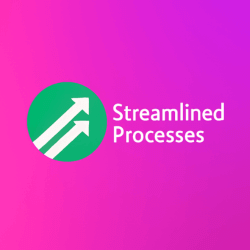For Payment Collection Platforms, see our main page here.
Understanding Payment Collection Platforms: What Are They?
Payment Collection Platforms help businesses receive money from customers securely and efficiently. They act as a bridge between the buyer, the seller, and the financial institution. Examples include PayPal, Stripe, Square, and Braintree.
Most importantly, they allow online and offline payments through various methods such as credit cards, bank transfers, mobile wallets, and even recurring billing. As a result, businesses can focus on their services while automating cash flow processes.
For instance, a small bakery may use Square for in-store purchases and Stripe for online cake orders. This seamless transition between platforms supports scaling efforts and enhances customer satisfaction.
Key Features to Look for in a Payment Collection Platform
Choosing the right tool requires an understanding of your business goals and your customers’ preferences. While many platforms might seem similar on the surface, their features can differ significantly.
- Multi-channel support: Accept payments online, in-person, by invoice, or via mobile.
- Recurring billing features: Ideal for subscription-based businesses.
- Integration capabilities: Sync with CRMs, accounting tools, or eCommerce systems.
- Security compliance: PCI DSS compliance and fraud detection mechanisms are must-haves.
- Payout flexibility: Customizable schedules for faster or slower fund access.
Therefore, it’s useful to compare how each platform handles these areas before making a decision, especially if you manage client payments across industries.
Top Payment Collection Platforms by Business Type
Not all businesses have identical needs. Some need rapid deployment, while others need deep customization. Here’s how leading tools align with specific company types.
- Freelancers: PayPal, Wave, and Wise for international clients.
- eCommerce: Stripe and Shopify Payments offer native online payment acceptance.
- Service Providers: Square and FreshBooks are great for invoicing and point-of-sale integration.
- Nonprofits: Donorbox and GiveWP simplify receiving donations with tax-compliance features.
In the same vein, SaaS platforms may prefer tools like Chargify or Recurly for managing monthly billing cycles and customer upgrades.
Why Payment Collection Platforms Boost Operational Efficiency
Automation is a game-changer in today’s business landscape. Payment Collection Platforms help companies reduce human error, speed up transactions, and increase data visibility.
For example, automating recurring billing means a gym owner doesn’t need to chase monthly dues. Systems send reminders, collect payments, and even pause access for non-paying members without manual steps.
Likewise, these platforms directly feed data into accounting software like QuickBooks or Xero, removing delays in reconciliation and reporting. Consequently, businesses improve financial planning and avoid cash flow surprises.
Hidden Costs and Considerations
While many Payment Collection Platforms boast low starting fees, hidden charges can impact overall cost. It’s important to review the fine print.
- Transaction fees: Usually around 2.5% to 3.5% per transaction, and higher for international cards.
- Payout delays: Some tools withhold funds for several days or longer for new sellers.
- Currency conversion costs: If you serve global clients, this can add up fast.
- Dispute charges: Chargebacks can cost $15-$30 per case, even if resolved in your favor.
Therefore, always compare several platforms to find the balance between features and fees. Ask other business owners or read verified reviews to avoid regret.
Industry Trends Shaping the Future
As digital commerce accelerates, Payment Collection Platforms are evolving to meet new demands. One major trend is the rise of “buy now, pay later” (BNPL) services. Tools like Klarna or Afterpay allow customers to split payments, improving sales conversions.
Another shift is toward embedded payments. Businesses embed payment links directly into email, social media, or chat apps—no need to leave the conversation to complete a transaction. As a result, sales happen in real-time without friction.
Moreover, platforms now focus on mobile-first interactions. With most users shopping from their phones, responsive and fast mobile experiences are non-negotiable.
Actionable Steps to Choose the Right Payment Collection Platform
- Define your payment needs: think channels, currencies, and automation.
- Compare industry-specific platforms: prioritize security, integration, and usability.
- Test with a small group of customers to iron out friction before full rollout.
- Monitor payment KPIs monthly—including average processing time and error rates.
- Negotiate fees once you gain transaction volume to save long term.
Most importantly, keep documentation updated for each transaction method. Audits and disputes are easier when information is well organized and accessible.
FAQs About Payment Collection Platforms
What is the safest Payment Collection Platform?
No platform is 100% immune to fraud, but Stripe, PayPal, and Square offer reliable fraud detection and PCI compliance. They regularly update their systems to reflect emerging threats, providing peace of mind for both merchants and customers.
Can I use multiple Payment Collection Platforms?
Yes, many businesses do exactly that. For example, a business might use Stripe for credit card payments and PayPal for international users. This offers flexibility and convenience for different customer segments.
Do Payment Collection Platforms support recurring billing?
Absolutely. Tools like Recurly, Chargebee, and Stripe make it easy to set up automated billing for subscriptions or memberships. This simplifies revenue tracking and reduces manual work.
What happens during a payment dispute?
If a customer disputes a charge, most platforms will temporarily deduct the amount from your balance, then review the issue. You can upload supporting documents like invoices or chat logs. After review, the platform decides whether to return the money or not.
Keep in mind that consistent service and clear communication reduce the risk of disputes altogether.
Transparency in AI-Generated Content
This article was created with the assistance of AI tools and reviewed by our team at Streamlined Processes LLC to ensure accuracy and relevance. Automation allowed us to organize, format, and structure this information efficiently, while our human editors ensured tone, facts, and usability were on point.
Combining human oversight with AI-backed research enables us to deliver helpful content quickly without compromising trust and clarity.
Follow us on Facebook here.

